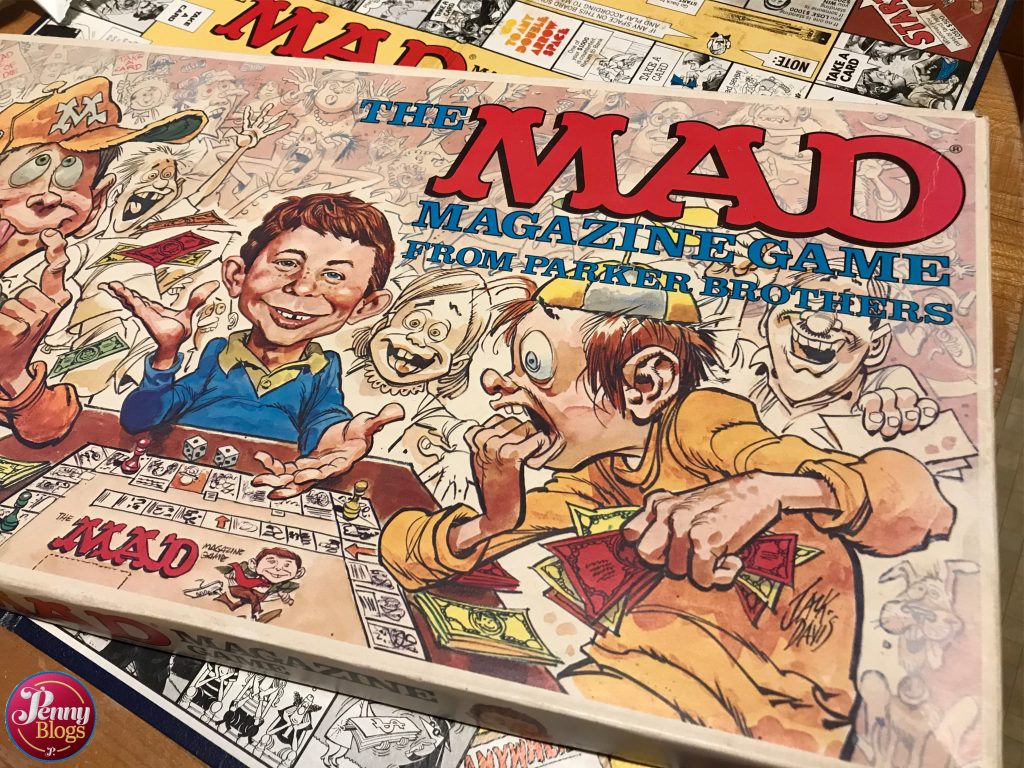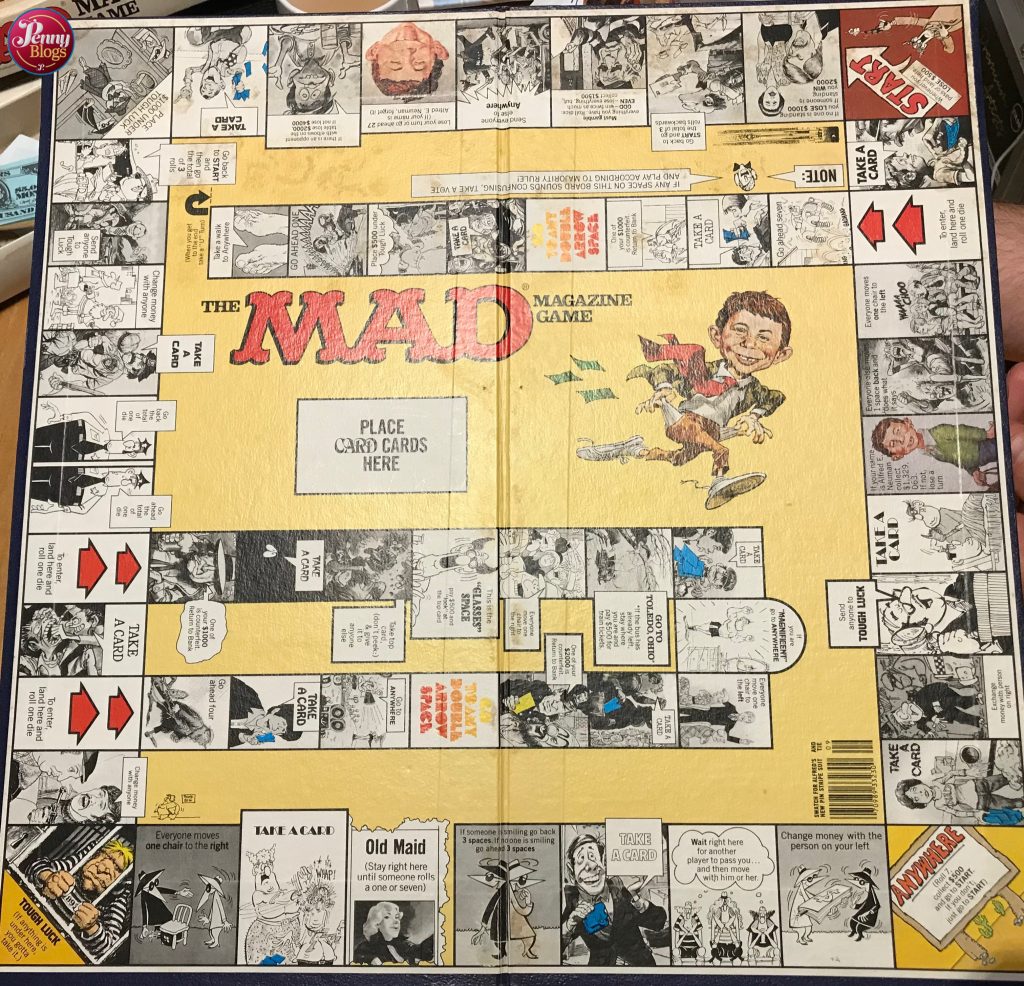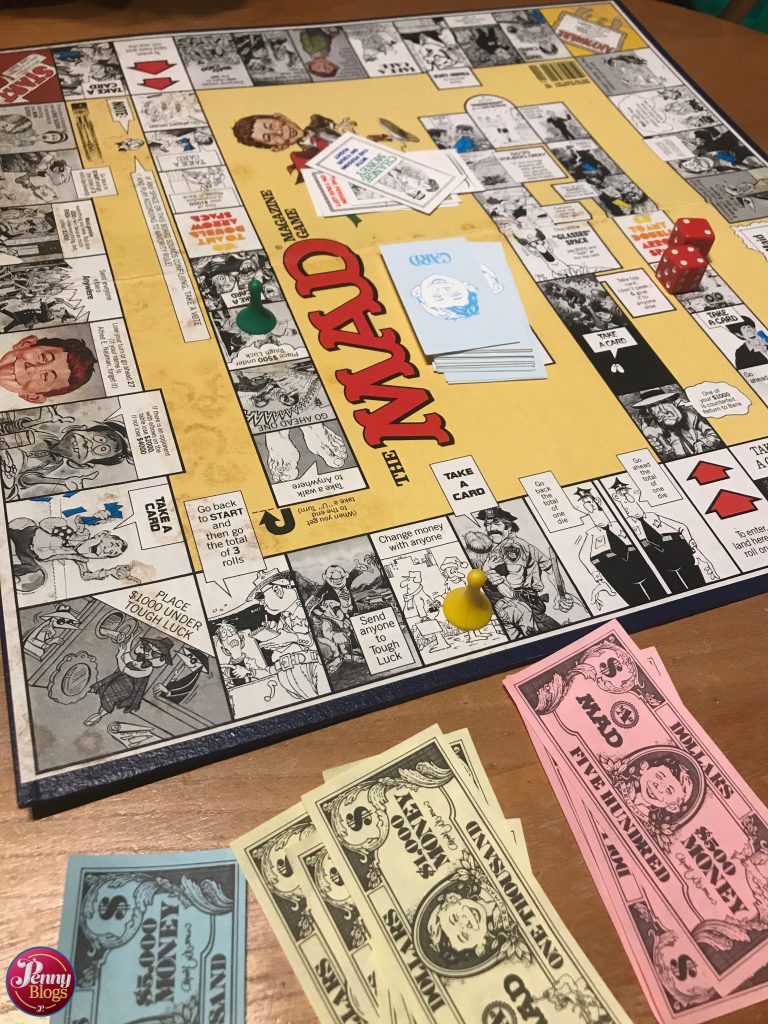There is absolutely no doubt that the world’s best known board game is Monopoly. Over the years there have been thousands of different versions of this classic, but what do you know about spin off games? When I picked up a small box containing the Parker Brothers card game Waterworks in a charity shop I wasn’t really sure what I was buying, but that’s often the excitement with buying vintage games.
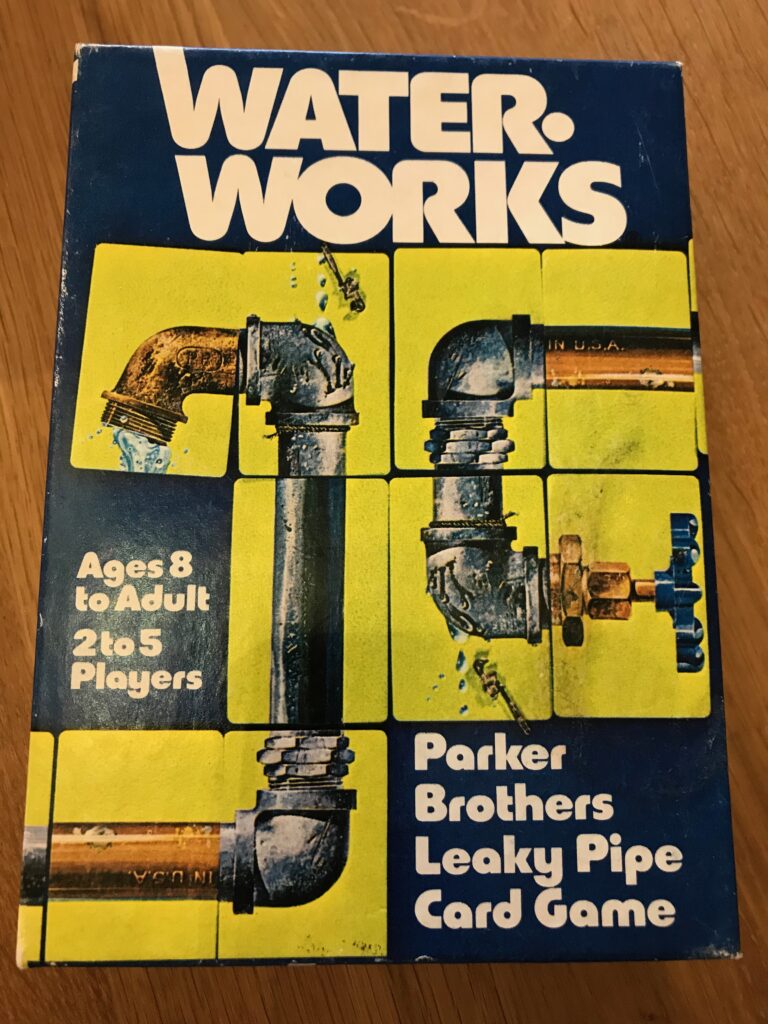
Waterworks and pipework
Released by Parker Brothers in 1972 the card game Waterworks was named after the Water Works space on the Monopoly board. The link with Monopoly goes no further than the name though. The aim of Waterworks is to build a pipeline of a specified length (depending on how many players are playing) and that it has to start with a valve (a tap) and end with a spout. The cards have on them pieces of pipe – either straight or bent – and some have junctions and caps on them. All pieces of pipe come in three different types –
- copper, which can never leak
- lead, which is vulnerable to leaks, and
- lead which is already leaking
The overall objective of the game may sound simple, but as the length of the instruction leaflet shows, it’s anything but simple at first.
How to play
All players start with one spout and one valve with which they will start and end their pipeline. They are then dealt five more cards which will be their playing hand. In addition they receive two small metal wrenches, which wouldn’t look out of place as weapons in a Cluedo game!
Players take turns in which they have to try to lay a card. This can be either adding a piece of good (i.e. non leaky) lead or copper pipe to their own pipeline, or they can add a leaky piece of pipe to another player’s pipeline. Should the player not have a suitable piece of pipe to use then they can discard one of their hand. Players draw a new card at the end of their turn, so that they always have 5 pipe cards in their hand – in addition to the already played tap and spout saved for the end of the game.
Cards always have to be played in a portrait format on the table meaning that you can easily end up in a situation where you just don’t have the right card to be able to play.
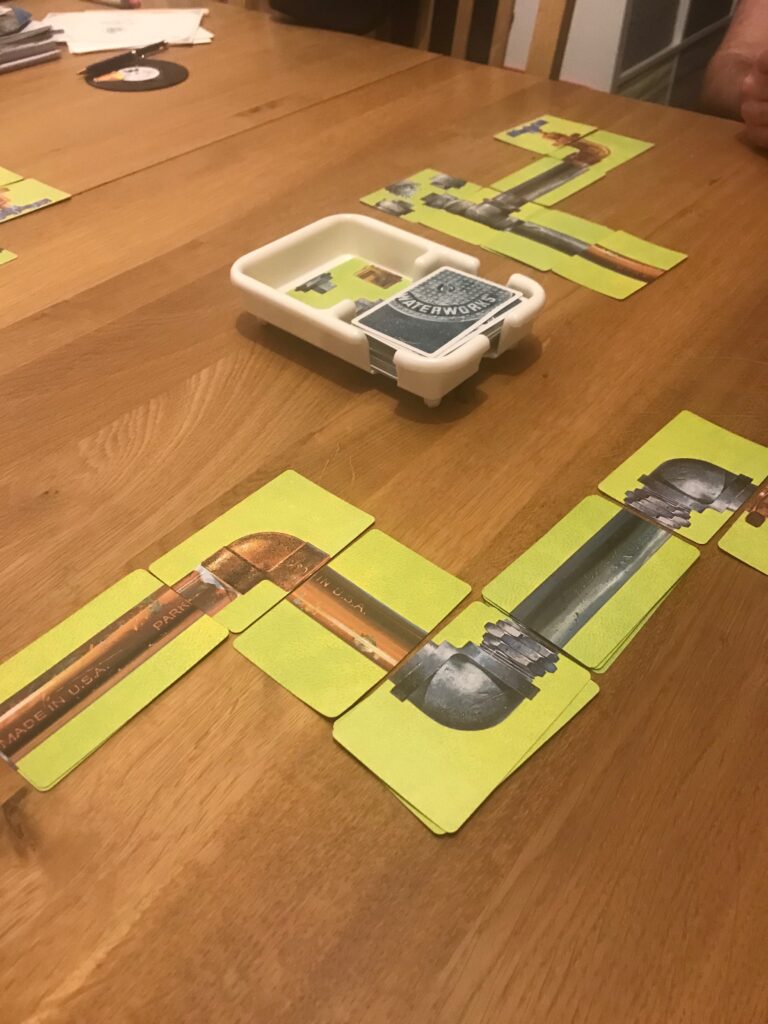
Leaky pipes
When it comes to leaky pipe cards, I’ve already mentioned that these are played on other player’s pipe lines, but they can either be added to the pipe line as the next card, or placed on top of the last card played in their pipe line, as long as it is a lead pipe (remember copper pipes can never leak). This helps delay the other player in making their pipeline of the required length. Leaks always have to be sorted out before players can add further to their pipeline. Even in a multiplayer game there can be no more than one leak in any player’s pipeline at a time. Also, once a pipe has been repaired it can’t leak again.
How to fix leaks
So, how do you repair the leaks? There are two ways to do this. Either by playing a good pipe card (of the same shape) on top of the leaky one, or by placing one of their metal wrenches on top of the card with the leak. This fixes the leak.
If a player does not have the right card or a wrench to fix their own leak then they can’t add any more good pipe to their pipeline. On their turn they can either just discard a card and draw a new one, or they can add a leak to another player’s pipeline.
Ts and Caps
As if things didn’t sound confusing enough already, the game also incudes cards with T junctions and caps on them. As is the case with these in real life plumbing, Ts and Caps can also leak.
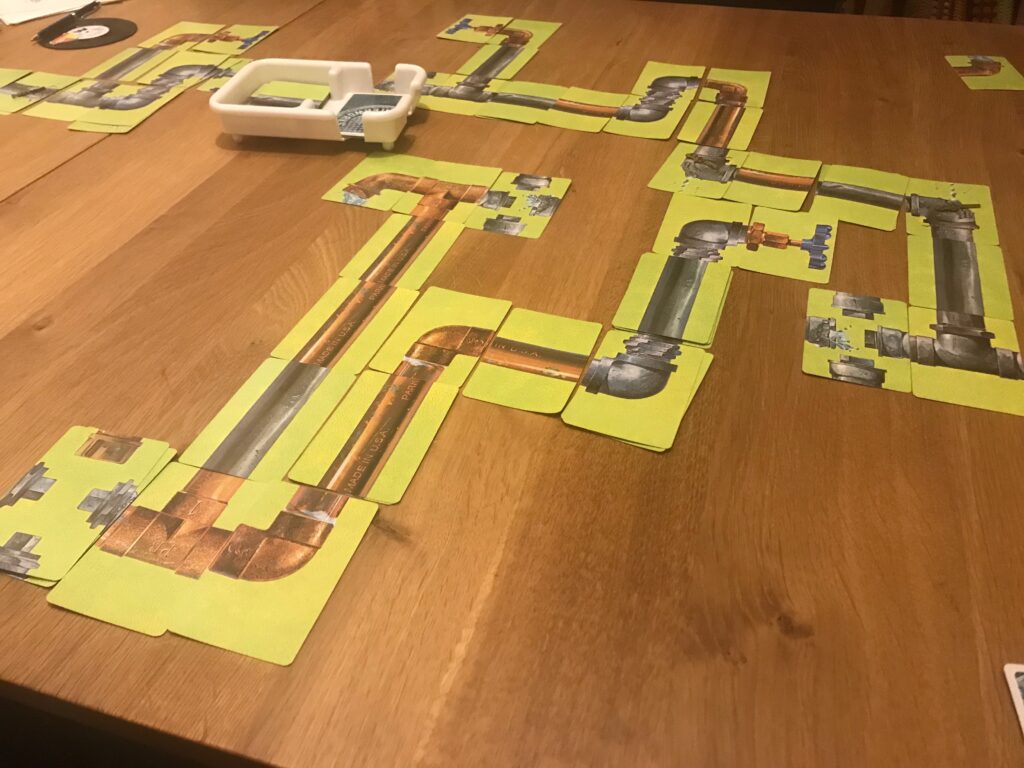
With a T added to a pipeline the water can technically flow in more than one direction, but we don’t want this as the aim of the game is for water to flow from the tap to the spout. If a player uses a T card they will then need to also use a cap to cap off one of the directions. Cap cards have four different types of cap on them, but it is wise to cap a route as soon as possible with a good cap as otherwise another player could add a leaky cap to a long route of pipe flowing one direction from the T and as your final pipe length is only counted between the tap and the spout this could render some cards useless from a length perspective.
Water flowing uphill?
A final note about finishing your pipeline. When you add your spout you must make sure that the water is flowing down out of it! Water doesn’t naturally flow up.
The bathtub
In the description of the game I’ve spoken of taking cards from a draw pile and discarding them. What I’ve haven’t mentioned until now is the gimmick in this game of there being a lovely small bathtub shaped tray to hold the cards. You take cards from one half of the bathtub and then discard them into the drain. A lovely small touch that you don’t need to play the game, but fun all the same.
What we thought of Waterworks
Our family was a little bit split on Waterworks. My son absolutely loves the game and would play it at every possible opportunity. There is great scope in the game to really sabotage another player’s game if the cards play in your favour.
The thing that I disliked about Waterworks though is that you need an absolutely massive playing space for it! We’ve a pretty big dining table that we use to play board games on, but even with just three of us playing we often had to rearrange pipes so that we weren’t falling off the table. With each card playing card size they really can take up a lot of space, even in a two player game as you’re trying to make your pipeline contain at least 15 cards excluding the tap and spout.
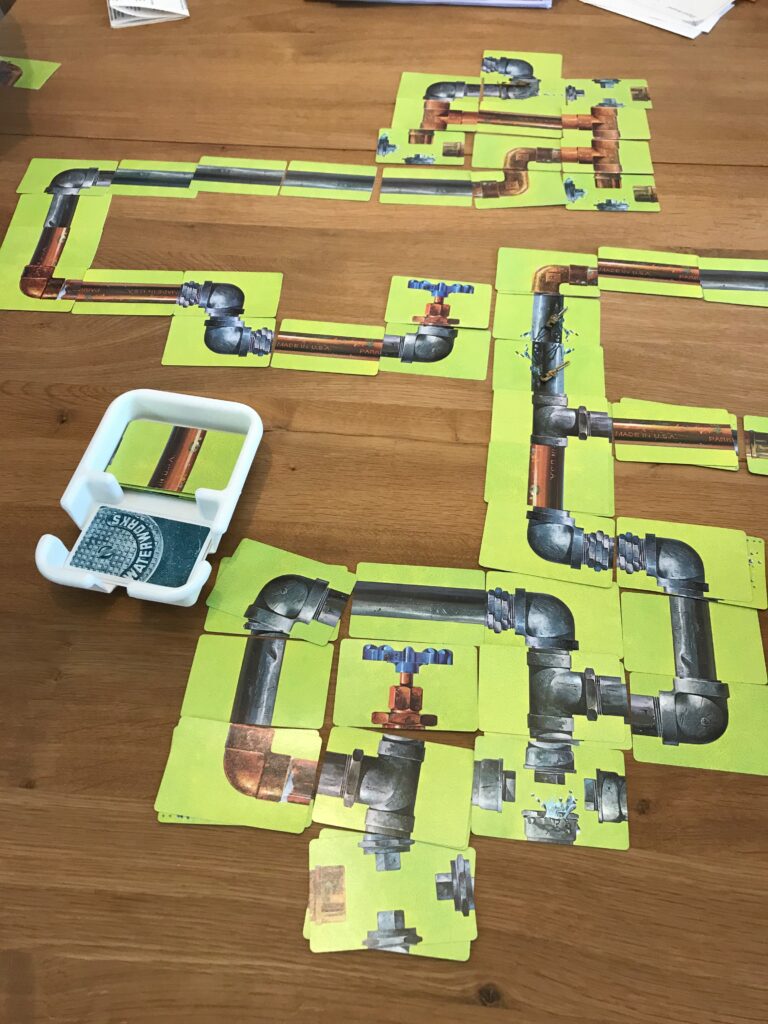
It is generally a fun game though, and not too difficult for older kids to pick up. The bathtub is cute and I like the retro tie in with Monopoly too. It will definitely stay in our game collection, but I can’t promise it will get played too often – unless we buy a much bigger table!
Waterworks – the facts
The game contains 110 pipe cards, 1 bathtub and 10 metal wrenches. It was originally published by Parker Brothers in 1972. A modern version of it was released by Winning Moves and is still available online now, but without the wonderful bathtub!
Are you a fan of vintage board games?
If you’re interested in vintage board games then why not head over to Facebook and join our new vintage board games group.
For more vintage board games and toys here on Penny Plays take a look here.

